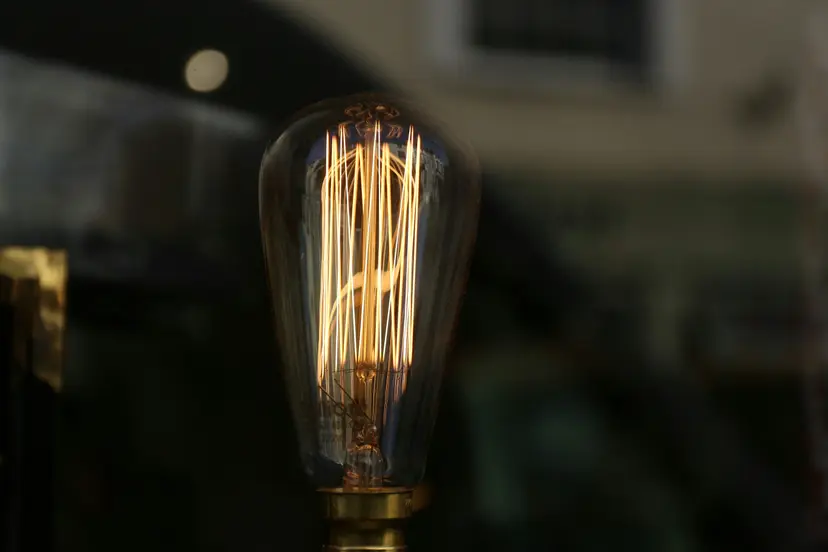Electricity is a fundamental part of modern life, powering homes, businesses, and technology. One of the core concepts in understanding electricity is the idea of "current." In this blog, we will explore what electric current is, the different types of current, and how it is measured, and provide examples to help you better grasp this essential concept.
What is an Electric Current?
Electric current is the flow of electrons and electric charge in a conductor. This flow occurs when electrons move from one point to another, driven by a difference in voltage. In simpler terms, it's the movement of electrons that powers your devices, appliances, and lighting.
The formula for electric current is:
Current (I)=Resistance (R)Voltage (V)
Where:
- I represent the current in amperes (A)
- V represents the voltage in volts (V)
- R represents the resistance in ohms (Ω)
Types of Electric Current
There are two primary types of electric current: Direct Current (DC) and Alternating Current (AC). Each has unique characteristics and applications.
| Type of Current | Description | Example Applications |
|---|
| Direct Current (DC) | The flow of electric charge in one direction only. | They are used in batteries, solar panels, and laptops. |
| Alternating Current (AC) | The flow of electric charge that periodically reverses direction. | Powers most household appliances and buildings, including TVs, washing machines, and lights. |
Example: Understanding DC and AC in Real Life
DC Example: When you use a battery-powered flashlight, the current flows in one direction from the battery, through the bulb, and back to the battery. This is direct current.
AC Example: In your home, the power you get from the electrical outlet is alternating current. The direction of the current reverses many times per second, making it ideal for large-scale power transmission.
How is Electric Current Measured?
The unit of measurement for electric current is the ampere (A), often referred to simply as an "amp." The more amps a circuit has, the more electricity flows through it. Electric current is measured using an ammeter, a device designed to measure the current flow in a circuit.
| Current Strength | Description | Example |
|---|
| 1-5 Amps | Small current, commonly found in devices like mobile chargers. | A phone charger might draw about 2 amps. |
| 10-20 Amps | Medium current, typical in household appliances. | A microwave oven can use 10-15 amps. |
| Over 50 Amps | Large current, often used in industrial applications. | An industrial motor might require over 50 amps to operate. |
Example: Measuring Current in a Circuit
Imagine you are building a circuit with a light bulb. You know the voltage of the battery is 9V, and the resistance of the bulb is 3Ω. To find the current flowing through the circuit, you use Ohm’s law:
I=RV=3Ω9V=3A
So, the current is 3 amps.
Applications of Electric Current
Electric current powers virtually everything we use daily, from small gadgets to industrial machines. Here are some practical applications where electric current plays a crucial role:
- Lighting: Light bulbs convert electrical energy into light by allowing current to flow through a filament or semiconductor, producing illumination.
- Electronics: Smartphones, computers, and tablets rely on precise electric current control.
- Heating: Electric stoves, water heaters, and space heaters use electric current to generate heat.
- Motors: Electric motors in appliances like refrigerators, air conditioners, and power tools depend on electric current to generate motion.
| Application | Type of Current Used | Example |
|---|
| Lighting | Both AC and DC | LED lights use DC, while standard bulbs often use AC. |
| Consumer Electronics | DC | Phones, laptops, and other devices use DC. |
| Household Appliances | AC | Washing machines, dishwashers, and ovens use AC. |
Electric Current Safety Tips
Handling electric current can be dangerous if you're not careful. Here are some essential safety tips when dealing with electric currents:
- Always switch off the power before working on electrical circuits.
- Use insulated tools when working with electricity.
- Do not overload circuits, as this can lead to overheating and potentially cause a fire.
- Keep water away from electrical devices to avoid short circuits and shocks.
Conclusion
Electric current is the backbone of modern electrical systems, powering everything from simple light bulbs to complex industrial machines. By understanding the basics of electric current, you can better appreciate how electricity powers the world around you and apply this knowledge to everyday situations.
Whether you are learning about electrical circuits for the first time or looking to deepen your understanding, the flow of current through a conductor is a critical concept that can open doors to countless technological advancements.
Credits
- Photo by Veroniki Thetis Chelioti on Unsplash

